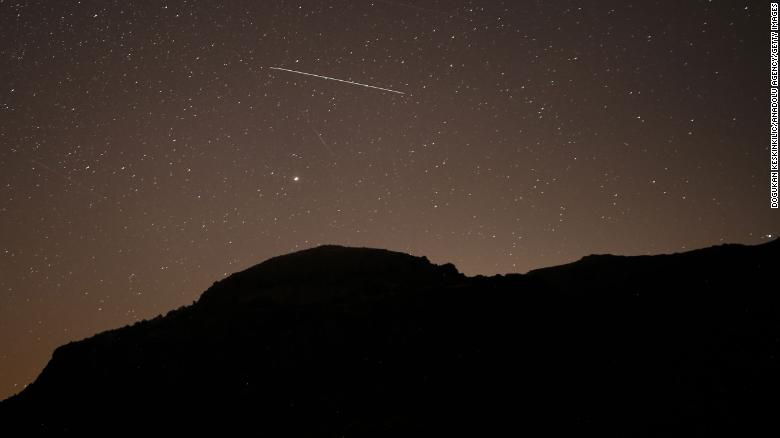So you can see the Leonid meteor shower 0:49
(CNN) -
Get your binoculars ready because the meteorites will paint the sky with their fleeting light on Wednesday morning.
The Leonid meteor shower will peak in the early morning of November 17.
This meteor shower is known to have a storm every 33 years, with the last one occurring in 2002, NASA said.
Its debris originates from Comet 55P / Tempel-Tuttle, a small comet about 3.6 kilometers wide, according to NASA.
The comet is hurtling through space at a speed of 71 kilometers per second, he added.
Spectators of the Leonid meteor shower, in areas of the United States where the weather will be clear, should expect to see about 10 to 15 meteors per hour, EarthSky said.
A meteor storm has significantly more shooting stars than a meteor shower - at least 1,000 per hour, according to NASA.
How to observe the meteor shower
The moon is unfortunately in a waxing gibbous phase at peak night, which means that much of the moon will be visible.
Bright light will make it harder to see meteors streaking across the sky.
For the best viewing conditions, go to a dark area with no light.
Skies with a covered moon are the best, according to EarthSky.
If the moon is visible, wait until dawn to search for meteors because at that point the moon will have set, EarthSky said.
advertising
If there is a large layer of clouds, you may not see anything.
"Cloud cover will spread across the Great Lakes and the Midwest, spreading into the Central Plains overnight through Wednesday morning," said Monica Garrett, a CNN meteorologist.
The skies will be clear in the south;
West, west of the Rocky Mountains;
and northeast, along the coast, he added.
Don't worry if you miss the peak of the Leonid meteor shower.
This will continue until November 30, according to NASA.
There are more meteor showers you can see for the rest of 2021, according to the EarthSky 2021 meteor shower guide:
December 13-14: Geminids
December 22: Ursidas
Solar and lunar eclipses
This year, there will be one more eclipse of the sun and another eclipse of the moon, according to The Old Farmer's Almanac.
A partial lunar eclipse will take place on November 19, and sky watchers in North America and Hawaii will be able to see it between 1 a.m. ET and 7:06 a.m. ET.
The last month of the year will begin with a total solar eclipse on December 4.
It will not be visible in North America, but it will be visible in the Falkland Islands, the southern tip of Africa, Antarctica and southeastern Australia.
Visible planets
Sky watchers will have multiple opportunities to spot planets in our sky on certain mornings and nights for the remainder of 2021, according to the Farmers' Almanac planetary guide.
It is possible to see most of these with the naked eye, with the exception of Neptune, but using binoculars or a telescope will provide the best view.
Mercury will shine in the night sky from November 29 to December 31.
Venus, our closest neighbor in the solar system, will appear in the western sky at dusk until December 31.
It is the second brightest object in our sky, after the moon.
Mars will show its reddish appearance in the morning sky between November 24 and December 31.
Jupiter, the largest planet in our solar system, is, when visible, the third brightest object in our sky.
Look for him in the evenings until December 31.
Saturn's rings are only visible through a telescope, but the planet itself can still be seen with the naked eye in the evenings from now until December 31.
Binoculars or a telescope will help you locate the greenish glow of Uranus at night until December 31st.
And our most distant neighbor in the solar system, Neptune, will be visible through a telescope during the nights until December 31.
meteor shower










